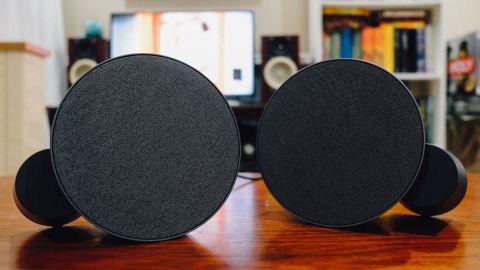Feedback From Laptop Speakers
Acoustic feedback is the result of a sound loop which exists between the audio input and the audio output. It is also called the Larsen effect, which is named after the Danish scientist Soren Larsen for his groundbreaking work on audio feedback. This loop of sound starts growing in intensity, and it will emit an unpleasant piercing scream.Why Feedback OccursIn most cases, acoustic feedback occurs when the microphone, which is an audio input, picks up sound from the, an audio output, and transmits it to the amplifier. Then, the sound is amplified and passed out through the loudspeakers. In all probability, the sound from the loudspeakers will be detected again by the and it will be amplified another time, creating a loop. This is an example of a positive feedback.
As a result, the piercing noise will continue until you break the loop of sound.Preventing FeedbackOne of the most effective ways to avoid audio feedback is by simply switching off the microphone before you turn on your audio system. Furthermore, you should make sure that the microphone input volume is turned down to its lowest level.

After the system is turned on, you can gradually raise the microphone volume. However, you have to experiment with the volume controls for some time before you can determine the optimum microphone volume level for your specific audio system. While adjusting the volume, you need to reduce the volume a little bit whenever the piercing noise appears.Ring Out the MicrophoneAudio feedback can also be reduced by 'ringing out' the microphone.

Laptop Speakers Wireless
It is a process where professional sound engineers turn down the band equalizer's frequency. This prevents audio feedback at a particular pitch, and at the same time, it allows the maximum possible volume to be played. Although sound engineers sometimes rely on their ears to ring out microphones, they often use a real time analyzer that is connected to the microphone to pick up the ringing frequency.Use an Anti-Feedback DeviceYet another method of avoiding audio feedback is by purchasing automatic anti-feedback devices.
Computer Speaker Feedback Noise
These devices are known in the market as feedback destroyers or feedback eliminators. They can reduce the high-pitched squealing noise significantly by up-shifting the frequency of the feedback.
Other anti-feedback devices use special filters such as adaptive filters to lower the howling sound of an audio feedback.Place Speakers in Front of MicrophoneMost of the time, audio feedback is initiated when microphones are placed in the direction of the output speakers. Using a is the best way to prevent such audio feedback problems. By strategically placing the main speakers in front of the microphone and using a number of small speakers, or monitors, which are pointing back to the place where the orator or each band member is positioned, audio feedback can be substantially reduced and even eliminated.